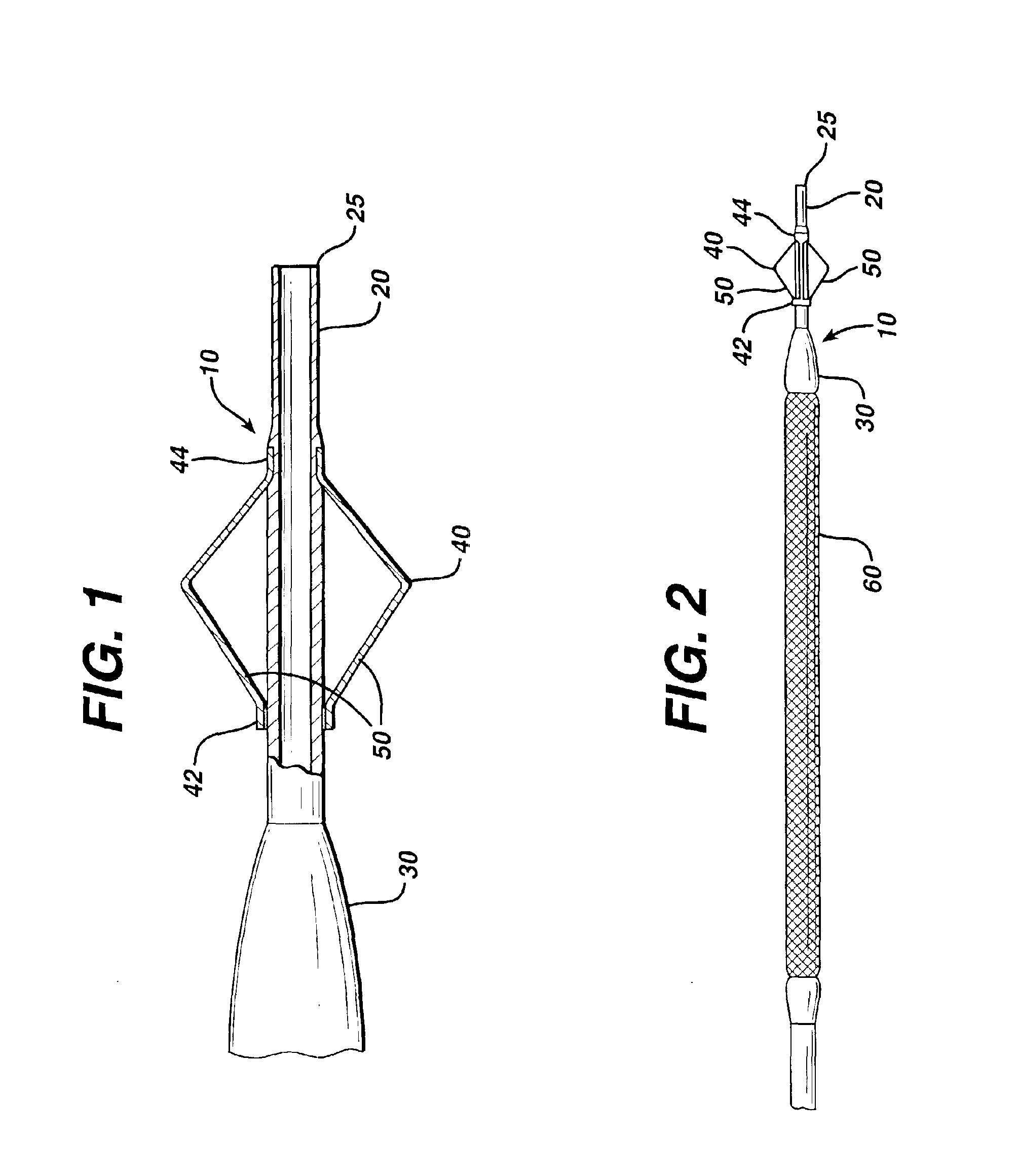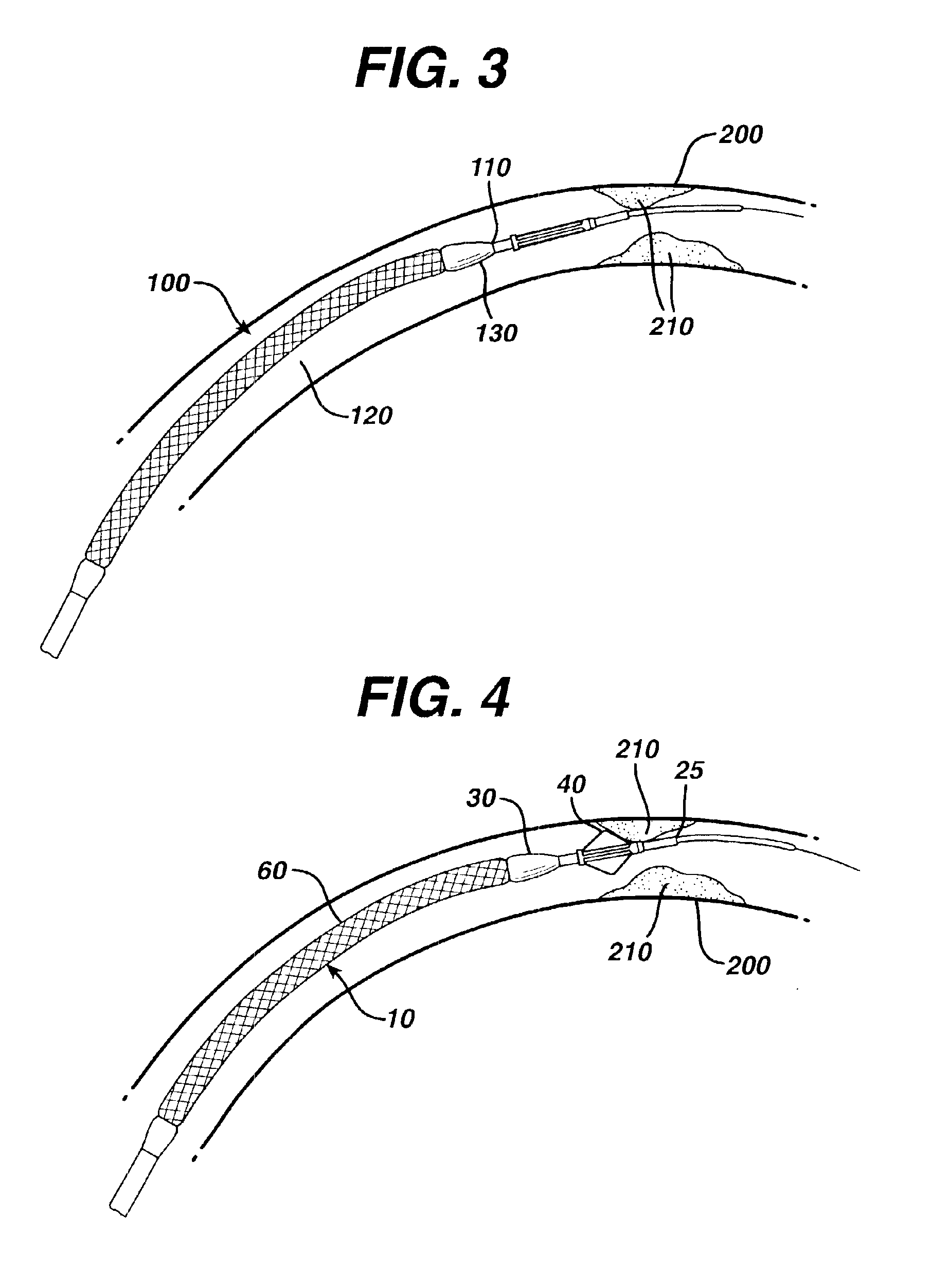Centering catheter
a catheter and centering technology, applied in the field of catheters, can solve the problems of inability to completely uniformize the deployment of the stent, inhibit the successful treatment of the lesion, and difficulty in delivery, so as to facilitate the access to the lesion location, avoid lumen damage, and facilitate the effect of traversing
- Summary
- Abstract
- Description
- Claims
- Application Information
AI Technical Summary
Benefits of technology
Problems solved by technology
Method used
Image
Examples
Embodiment Construction
[0020]The centering catheter of the present invention is designed to facilitate access to a treatment site in a lumen of a vessel through tortuous anatomy, and to facilitate uniform stent deployment at the treatment site. The centering catheter of the present invention comprises an elongated catheter body having a proximal end and a distal end, and at least one centering device attached near the distal end of the catheter. The centering device comprises a proximal end and a distal end, and at least two struts extending therebetween. The centering device has a smaller first diameter for insertion into the lumen, a larger second diameter for expanding to substantially equal the diameter of the lumen of the vessel, and a plurality of intermediate diameters therebetween.
[0021]The centering device may be employed in any type of flexible elongated medical device product, including catheters, cannulae, guidewires and scopes. Although the centering catheter may be utilized in conjunction wi...
PUM
 Login to View More
Login to View More Abstract
Description
Claims
Application Information
 Login to View More
Login to View More - R&D
- Intellectual Property
- Life Sciences
- Materials
- Tech Scout
- Unparalleled Data Quality
- Higher Quality Content
- 60% Fewer Hallucinations
Browse by: Latest US Patents, China's latest patents, Technical Efficacy Thesaurus, Application Domain, Technology Topic, Popular Technical Reports.
© 2025 PatSnap. All rights reserved.Legal|Privacy policy|Modern Slavery Act Transparency Statement|Sitemap|About US| Contact US: help@patsnap.com



